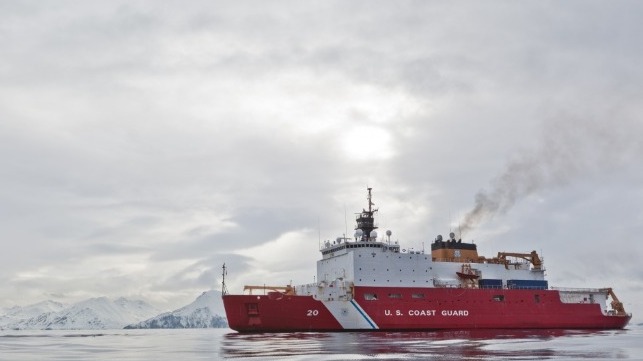//keep unread//hide

The U.S. Coast Guard cutter Healy - one of only two oceangoing icebreakers in the U.S. government inventory - has been temporarily sidelined by a machinery fire.
On August 18, the Healy was under way about 60 nm off the coast of Seward, Alaska. At 2130 hours, an electrical fire was reported in a machinery compartment. The source was one of her main propulsion motors; the fire team disconnected the motor and fully extinguished the blaze by 2156 hours.
The fire disabled Healy’s starboard propulsion motor and shaft, and the ship is now transiting back to her homeport in Seattle for repairs. At the time of the casualty, Healy was under way on a combined science and national security presence mission in the Arctic. The operation has been canceled.
Healy is a diesel-electric, twin-screw medium icebreaker designed for operating in up to 10 feet of ice, sufficient for most Arctic operations. She was built at now-defunct Avondale Shipyard in the late 1990s and commissioned in 1999. Among other distinctions, she was the first American surface vessel to reach the North Pole unacommpanied.
The U.S. government's only other oceangoing icebreaker is the aging USCGC Polar Star, which is reserved solely for the annual McMurdo Station resupply mission in Antarctica. "This casualty . . . means that the United States is limited in icebreaking capability until the Healy can be repaired, and it highlights the nation’s critical need for [newly ordered] Polar Security Cutters,” said Pacific Area commander Adm. Linda Fagan in a statement.
The USCG recently placed an order with VT Halter Marine for the first in a series of up to three new Polar Security Cutters, derived from a design for the (now-canceled) German icebreaker Polarstern II. These replacement ships should be capable of breaking through pressure ridges up to 21 feet thick, according to the design specification. Construction is set to begin on the first hull early next year for delivery in 2024 - 12 years after the Coast Guard began advocating to replace its Cold War-era heavy icebreakers.











No comments:
Post a Comment
How did you like the post, leave a comment. I would appreciate hearing from you all. Best wishes from JC's Naval, Maritime and Military News